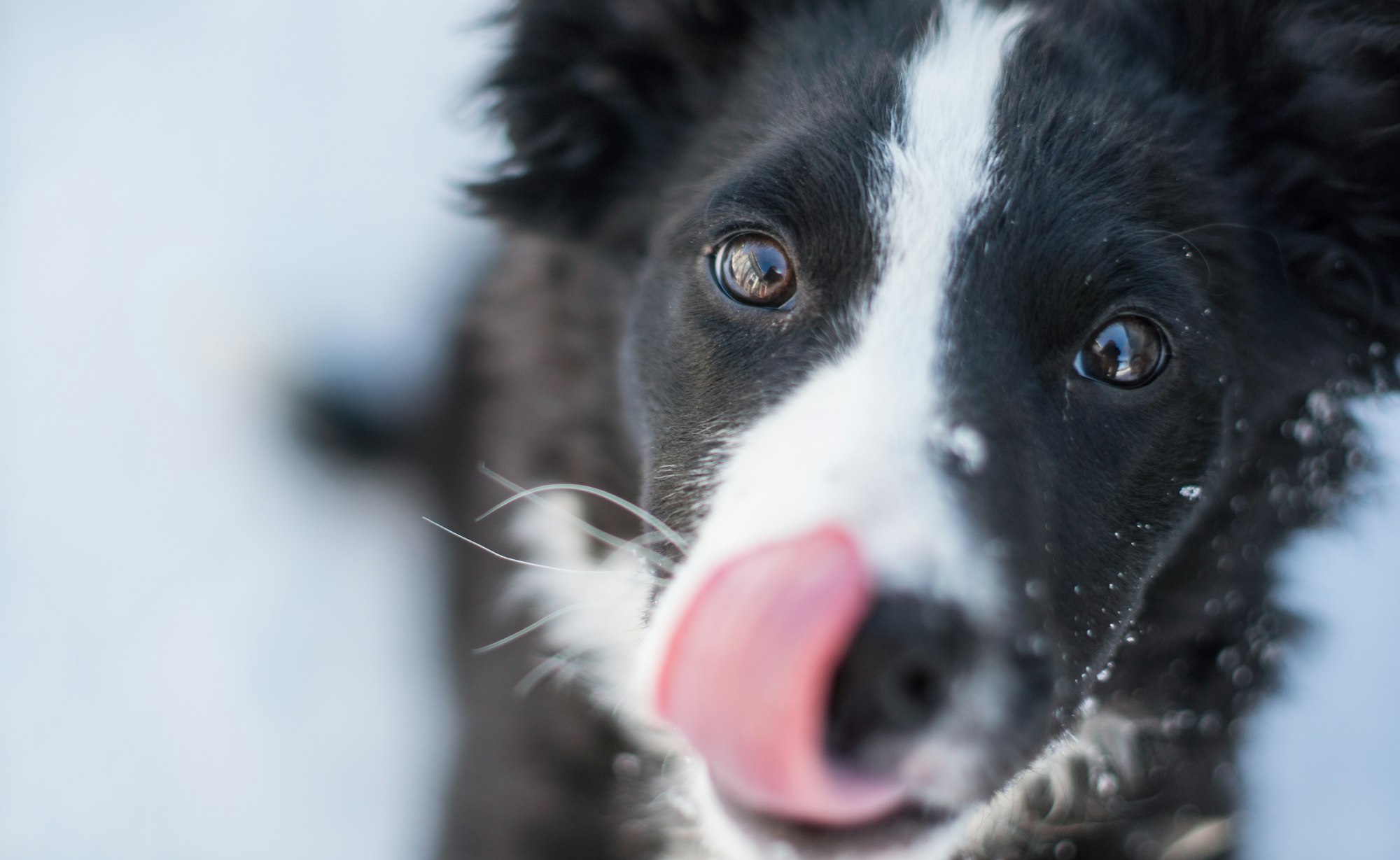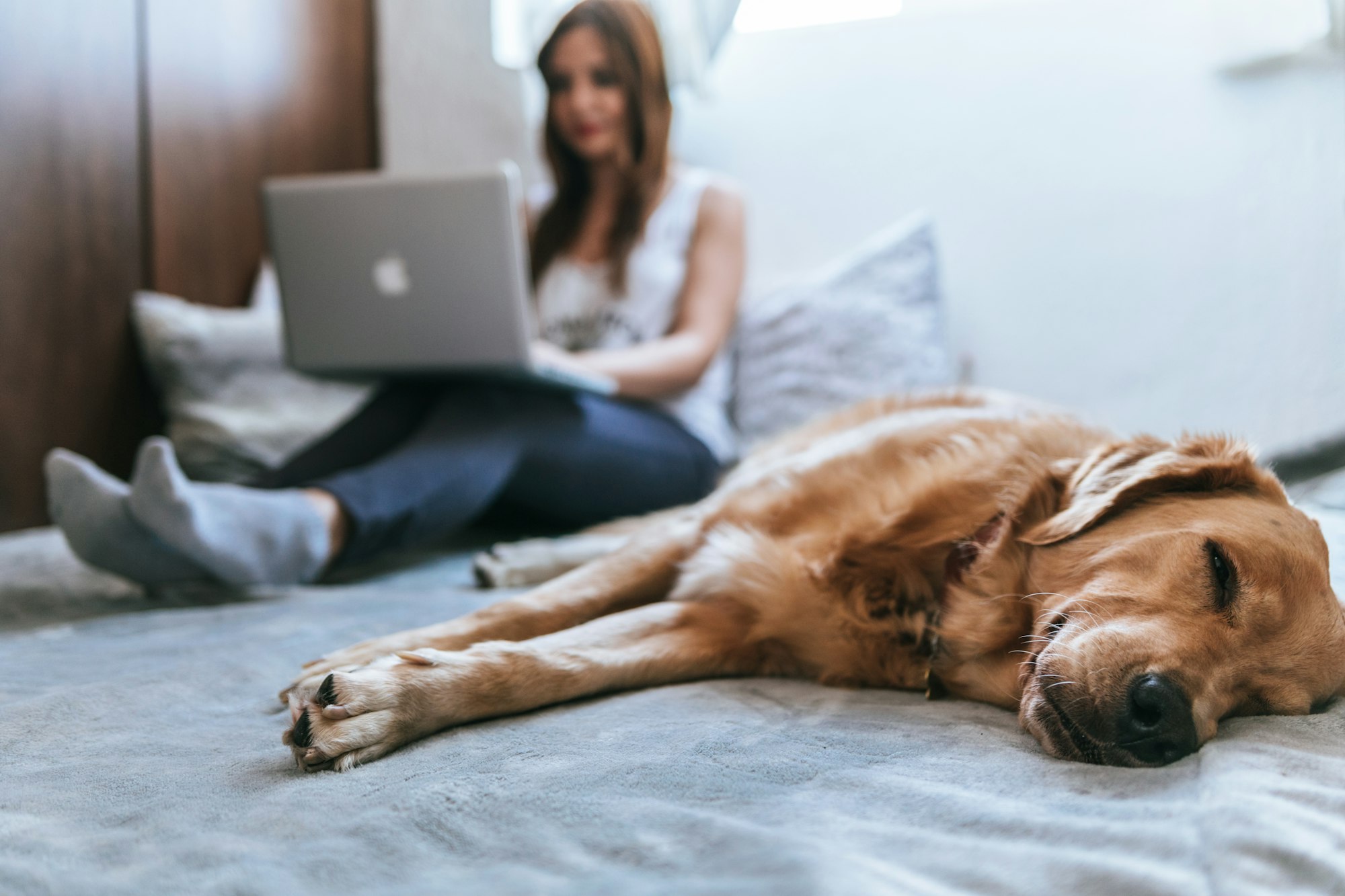Dogs are known to have a variety of behaviors, and one common behavior is licking. As a dog owner, you may have experienced your furry friend licking your legs. But why do dogs engage in this behavior? Understanding the reasons behind this can provide insight into your dog's behavior and strengthen the bond between you.
Key takeaway:
- Dogs lick for various reasons: Dogs lick to show affection, for grooming purposes, to seek attention or playfulness, as a result of anxiety or stress, and to explore and investigate using their sense of taste.
- Dogs licking their owner's legs is normal behavior: Licking is a common way for dogs to interact and bond with their human owners.
- Excessive licking may indicate a problem: If a dog excessively licks their owner's legs or other body parts, it may be a sign of underlying issues such as allergies, skin conditions, or behavioral problems. Consult a veterinarian if concerned.
- Managing excessive licking: It's important to redirect the licking behavior by providing alternative outlets for the dog's energy and attention, such as toys or interactive play. Positive reinforcement can also help discourage excessive licking.

Why Does My Dog Lick my Legs?
Ever wondered why your furry friend just can't resist giving your legs a good lick? In this exploration of canine behavior, we'll uncover the intriguing reasons behind why dogs lick our legs. From deep bonds of affection and grooming instincts to the playful pursuit of attention, we'll discover the various motivations that drive your pup's tongue to your skin. Get ready to dive into the fascinating world of dog communication and understand what your dog's lick really means.
Affection and Bonding
Dogs lick their owner's legs as a way to naturally incorporate affection and bonding. This behavior serves as a form of communication and a means for dogs to showcase their love and attachment to their human companions.
Affection: Dogs utilize licking as a gentle method to express affection towards their owners. It is their way of demonstrating love and gratitude.
Bonding: Licking also plays a role in strengthening the bond between dogs and their owners. The act of licking releases endorphins in both the dog and the owner, creating a sense of connection and bonding.
Social interaction: Licking is a social behavior that dogs employ to communicate with their pack members. By licking their owner's legs, dogs seek attention and engagement, enjoying the closeness to their owners.
Comfort and reassurance: Dogs may lick their owner's legs when feeling anxious or stressed, seeking comfort and a sense of security in their environment.
Submission and respect: Dogs may also lick their owner's legs as a sign of submission and respect. Through this behavior, they acknowledge their owner's authority and dominance.
Understanding why dogs lick their owner's legs can enhance the overall relationship, strengthening the bond between humans and their furry companions. It is important to reciprocate their affection and provide them with love and care in return.

Cleaning and Grooming Behavior
The cleaning and grooming behavior of dogs, also known as their cleaning and grooming instinct, is a natural habit that serves several purposes. It's essential to understand the following key points about this behavior:
- Cleaning: Dogs naturally clean their fur and remove dirt or debris by licking themselves and others. This behavior is crucial for maintaining a healthy coat.
- Grooming: Licking is not only a cleaning method but also a form of grooming. Dogs may lick their own legs or other areas to keep them tidy and free from tangles.
- Bonding: In addition to their personal cleaning and grooming, dogs also use licking as a way to bond with their owners. It allows them to express affection and strengthen the bond between them.
- Caring for wounds: When dogs have minor injuries or irritations, they may instinctively lick the affected area. This licking helps clean the wound and aids in the healing process.
- Anxiety or stress: Excessive licking of the legs can sometimes indicate anxiety or stress in dogs. They engage in this behavior as a self-soothing mechanism to alleviate their emotional discomfort.
Cleaning and grooming behavior through licking is a regular part of a dog's routine and can be triggered by different motivations depending on the situation.
Seeking Attention and Playfulness
- Seeking attention and playfulness: Dogs may lick their owner's legs to seek attention and initiate playtime. It is their way of communicating and engaging with their owners.
- Building a bond: Licking can also be a sign of affection, as dogs use it to strengthen the emotional connection with their owners.
- Playfulness: Licking legs is a playful behavior for dogs, reflecting their natural instincts to enjoy interactive and fun activities with their owners.
- Sensory exploration: Dogs explore and gather information about their environment through licking. By licking their owner's legs, they can satisfy their curiosity by gathering scents and tastes.
Sensory Exploration and Investigation
During sensory exploration and investigation, dogs may lick their owners' legs to gather information about their environment. By licking, dogs can taste and smell various scents present on their owners' skin and clothing. This behavior allows them to gather important information about their surroundings and the people they interact with.
Licking is a way for dogs to explore and investigate their surroundings, as it helps them gather sensory information during sensory exploration and investigation. They have a highly developed sense of smell, and their taste buds can detect subtle changes or scents on different surfaces. By licking their owners' legs, dogs can gain valuable information about where their owners have been, whom they have interacted with, and what they have come into contact with.
Fact: Dogs have a specialized organ called the vomeronasal organ, also known as Jacobson's organ, which helps them analyze and process specific scents through licking and sniffing. This organ enhances their ability to explore and investigate their environment through sensory stimulation.

Is It Normal for Dogs to Lick Their Owner's Legs?
It is perfectly normal for dogs to lick their owner's legs. This behavior can occur for several reasons, including a display of affection, an attempt to communicate, or a way to gather information about their surroundings. Dogs possess a strong sense of smell, and by licking their owner's legs, they are able to pick up familiar scents, thus gaining a sense of security and comfort. In fact, licking can also serve as a calming behavior for dogs, helping them relax and alleviate stress.
When Should I Be Concerned about Excessive Licking?
While licking is a normal behavior for dogs, excessive licking can indicate underlying issues that require attention. If your dog is constantly licking themselves, objects, or even you, it may be a sign of discomfort, stress, allergies, or boredom. It's important to observe the frequency and intensity of the licking to determine if it is excessive.
If your dog's licking is accompanied by other symptoms such as redness, swelling, hair loss, or wounds, it's time to be concerned. When should I be concerned about excessive licking? These could be signs of skin irritation, infections, or even allergies. Pay attention to changes in behavior, appetite, or energy levels as well. Consulting with a veterinarian is advisable to rule out any medical conditions that may be contributing to the excessive licking.
Fact: Did you know that excessive licking can also lead to a condition called lick granuloma? Lick granulomas are open sores that develop from constant licking and can be difficult to heal. Monitoring your dog's licking behavior and addressing it promptly can prevent the development of such complications. When should I be concerned about excessive licking?
How to Manage or Redirect the Licking Behavior?
- Identify the trigger: Pay attention to what prompts your dog to start licking. Is it when you give them attention, when they are anxious, or when they want something?
- Train an alternative behavior: Teach your dog to "sit" or "down" that they can perform instead of licking. Use positive reinforcement such as treats or praise to reinforce the desired behavior.
- Provide mental and physical stimulation: Ensure your dog gets enough exercise and mental enrichment to prevent boredom, which can lead to excessive licking.
- Use deterrents: If your dog continues to lick despite redirecting their behavior, you can use bitter-tasting sprays or deterrents on the areas they frequently target.
- Consult with a veterinarian or behaviorist: If your dog's licking behavior persists or becomes problematic, seek professional advice to rule out any underlying medical conditions or to address any potential anxiety or compulsive behaviors.

When to Consult a Veterinarian?
When to Consult a Veterinarian? Consulting a veterinarian is necessary in certain situations to ensure the health and well-being of your dog.
- Severe or prolonged symptoms: If your dog is experiencing severe or prolonged symptoms such as vomiting, diarrhea, or difficulty breathing, it is important to seek veterinary care immediately. These symptoms may indicate a serious underlying condition that requires medical attention.
- Changes in behavior: If your dog's behavior suddenly changes, such as becoming unusually aggressive or lethargic, it could be a sign of an underlying health issue. Consulting a veterinarian can help determine the cause and provide appropriate treatment.
- Unexplained weight loss: If your dog is losing weight without a change in diet or activity level, it may indicate an underlying health problem. A veterinarian can perform a thorough examination and diagnostic tests to identify any underlying conditions.
- Visible injuries: If your dog has visible injuries, such as wounds, fractures, or lacerations, it is important to seek veterinary care. Prompt treatment can help prevent further complications and promote healing.
Some Facts About Why Does My Dog Lick My Legs:
- ✅ Dogs lick their owners' legs as a way to show affection, gratitude, and trust.
- ✅ Licking legs is a behavior learned from mother dogs to clean and care for puppies.
- ✅ Dogs have a special organ called the vomeronasal organ that analyzes compounds and sends information to the brain.
- ✅ Dogs lick legs to taste and smell salty sweat and oils, as well as pheromones, to gauge their owner's mood.
- ✅ Licking legs stimulates the release of oxytocin and endorphins, helping dogs address anxiety and stress.
Frequently Asked Questions
How can I stop my dog from excessively licking my legs?
If your dog's leg licking becomes excessive or bothersome, there are a few strategies you can try:
- Acknowledge the behavior and redirect their licking to an appropriate object, such as a favorite chew bone or a toy.
- Create distractions for your dog by engaging them in physical or mental activities.
- If necessary, seek expert advice from a professional dog trainer or behaviorist who can provide tailored solutions to curb excessive licking.
- If you suspect underlying health conditions or anxiety, consult a vet for a comprehensive evaluation and guidance.
What does it mean when my dog licks my legs along with other body language signals?
When dogs lick your legs along with other body language signals, it usually indicates:
- Appreciation and gratitude: Licking the leg can be a sign of appreciation from your dog, accompanied by wagging their tail and adopting submissive postures.
- Greeting and bonding: Dogs may lick legs as a form of greeting, bonding, and appeasement. It is their way of showing friendliness and building a connection with you.
- Seeking attention or excitement: A dog may lick your legs to get your attention, play, or express excitement.
Is excessive leg licking harmful for my dog?
Excessive leg licking itself is not harmful unless it becomes disruptive or indicates underlying health issues, anxiety, or stress. However, it is essential to monitor the behavior and consult a vet if you have concerns.
Why do dogs lick legs in social situations?
In social situations, dogs may lick legs as a way of greeting, evaluating other dogs' intentions, and expressing submissiveness. It is a form of non-verbal communication and a common social activity among canines.
Can leg licking be a self-stimulatory behavior in dogs?
Yes, leg licking can sometimes be a self-stimulatory behavior in dogs. Some dogs engage in repetitive licking as a way to soothe themselves or relieve stress. Monitoring the frequency and intensity of leg licking is important to differentiate between normal behavior and self-stimulatory actions.






